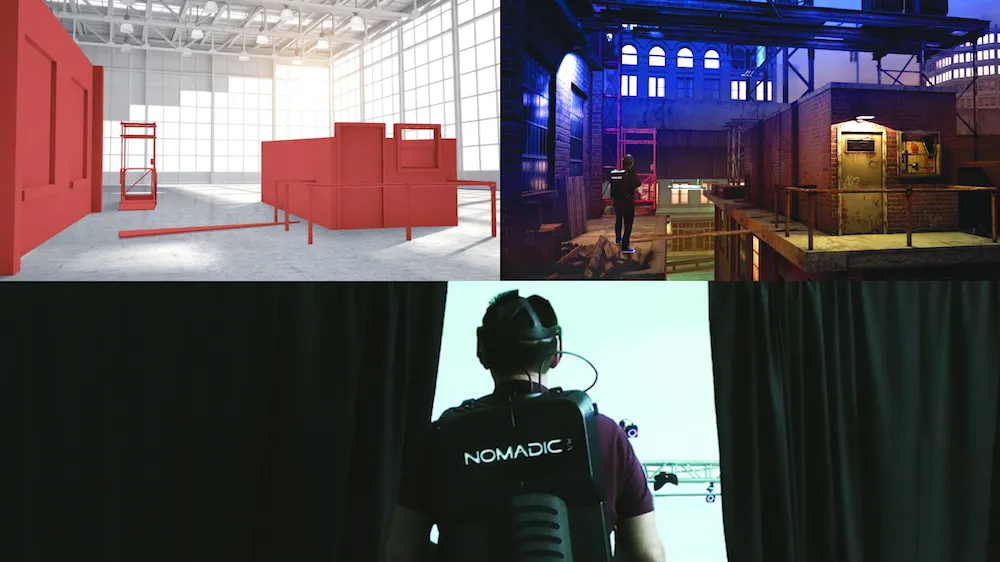A new VR company is emerging from stealth mode that is aiming to make location-based VR arenas as common as your local movie theater or shopping mall. It is called Nomadic and was founded by a group of entrepreneurs with former experience at Disney, Industrial Light and Magic and Electronic Arts. Nomadic will facilitate, deliver and help to implement modular VR arenas that provide deeper levels of immersion through real world props and carefully designed spaces.
The Nomadic approach is similar to that of other location-based VR companies such as The Void, but with a greater emphasis on modular assembly and multi-use spaces, according to company representatives.
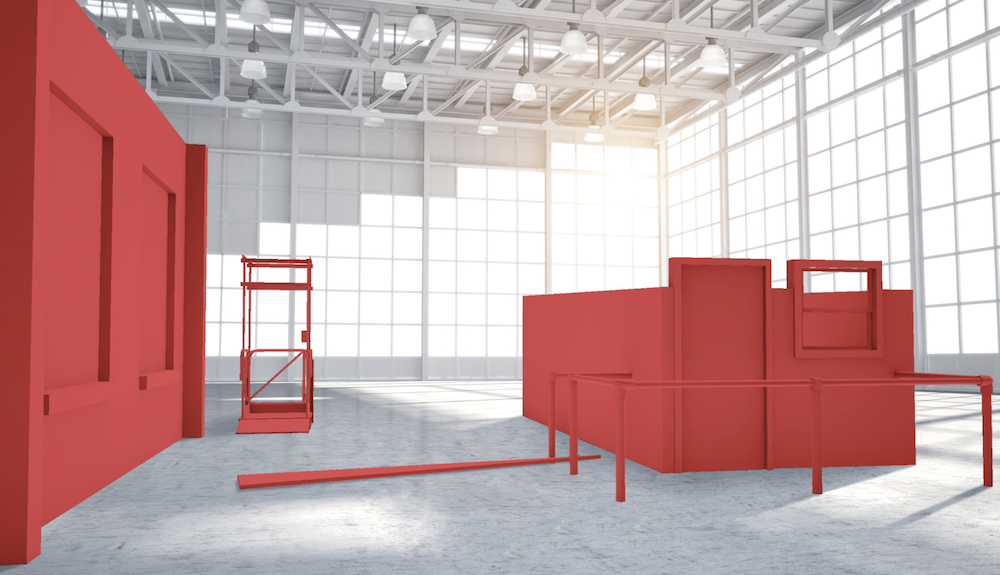
The Nomadic team is targeting movie theaters as their primary clients due to that market’s current search for innovation. Netflix’s CEO Reed Hasting’s made headlines this week by slighting traditional movie theaters for not innovating beyond popcorn. Theaters across the country are scrambling to attract customers by adding more comfortable reclining chairs, increasing screen sizes and crafting more creative concessions. Nomadic wants to give theaters a lifeline by enabling them to turn one or more of their underused spaces into a bustling VR arena.
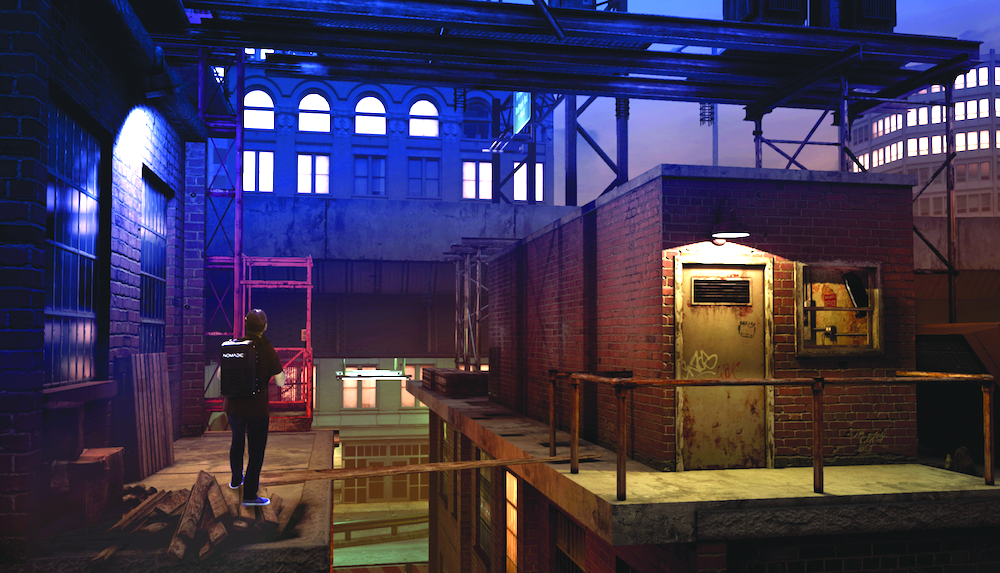
The Nomadic approach would involve fairly heavy initial construction — leveling the floors, removing the screens and seats, etc. — but then offers a grid layout that makes assembling new components for different experiences a snap. This means that rather than having to construct a multi-million dollar arena with one or two dedicated experiences that will stand for months or even years, Nomadic is aiming to allow its venues the option to rotate out their components for new content every 90 days.
Nomadic will simply ship the necessary pieces, parts and structures to the venue which would then be able to snap everything together on the grid. The company is also building the software experiences in-house as well, at least at the outset, but the plan is to work with additional content partners as things progress.
I was able to try a Nomadic experience during a visit to their offices last week. I was taken down to a spacious basement warehouse and given a PC-backpack connected to an Oculus Rift. The Nomadic reps were clear that the Rift will not be used when the products actually start to ship but is being used until a suitable substitute can be found.
I was not permitted to see the layout of the experience before my demo began, but I did notice, and Nomadic confirmed, that positional tracking is being done by an array of Optitrack cameras throughout the space.
With the headset over my eyes I was now in an experience code named, Chicago. It took the form of a dank office with moldy furniture scattered throughout. As I walked through the first room I decided to randomly kick a stool placed in the corner. My guess was they wouldn’t have positionally tracked EVERY asset in the experience. But, sure enough, my foot connected with metal. I then started testing everything I could and all of the walls, tables, doorknobs and drawers were all physically there with me in the digital experience.
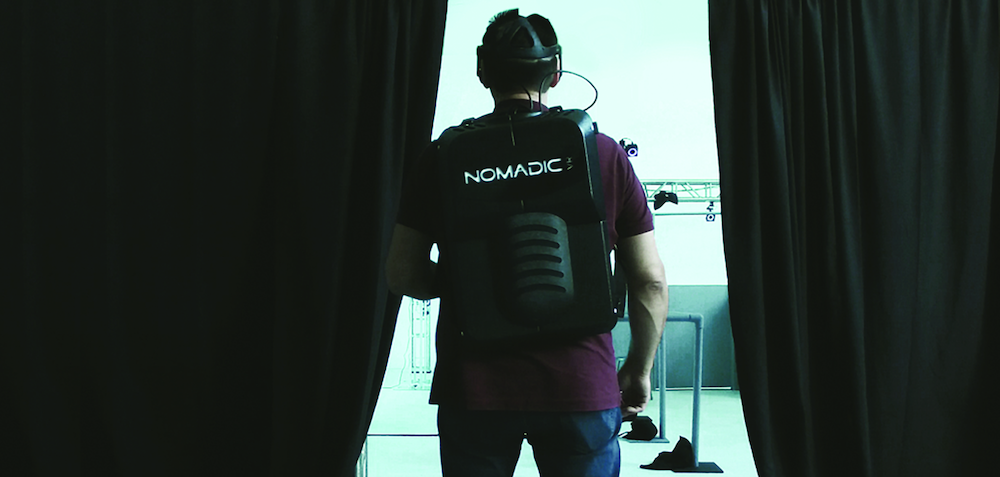
I was instructed to pull a gun out of a desk drawer and got my hands on a weighty pistol. I then stepped out onto the building’s fire escape and was greeted with ambient noises and a fresh breeze that instantly convinced my brain it was both outside and up high. I walked across the catwalk and was met by a band of enemy drones that I had to shoot down with my weapon. From there the experience had me walking across narrow planks and riding up outdoor elevators before finally reaching an EMP and terminating all my robotic foes.
When I took the headset off I was surprised to see how simple the layout I just walked through was. It clearly doesn’t take much to make the virtual world feel physical.
According to Nomadic, average experiences will be about 15 minutes long and will be priced below the cost of a regular film.
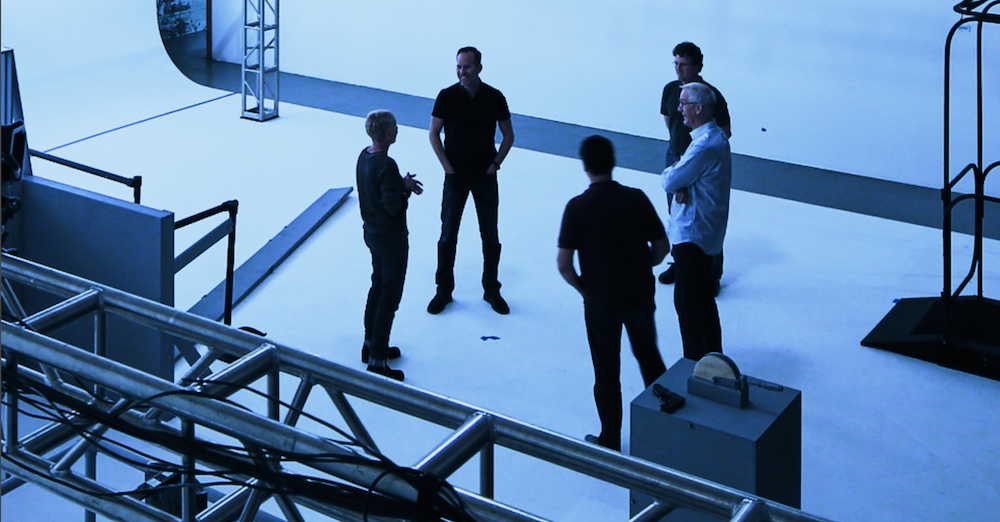
Nomadic’s founders are experienced in filmmaking and the visual arts. The top execs include:
Doug Griffin, President – Griffin’s work at ILM, Disney, and EA can be seen in projcects including Star Wars, Pirates of the Caribbean, Need For Speed, and Madden.
Rick Schulze, Studio Director – Schulze is a director and visual effects supervisor with years of experience. He’s directed broadcast commercials including Superbowl spots, and developed special effects for feature films including The Matrix.
John Duncan, Production Designer – Schulz’ work can be seen in projects such as Star Wars, Wall-E, Pirates of the Caribbean, Star Trek, and MythBusters. He has worked on commercial projects for Apple, Google, Facebook, and Salesforce.
Kalon Gutierrez, Head of Growth – Gutierrez was VP of Business Development at both JCPenney and ZoomSystems.
Alex Mathis, Lead Enviornment Artist – Mathis has 20 years experience in console, PC, and mobile gaming. He’s worked at studios such as Activision, EA, and Glu.
Chuck Bueche, Interactive Systems Engineer -Bueche was cofounder of Origin Systems, famous for the Ultima and Wing Commander game series. He spent over a decade building location based attractions for Walt Disney Imagineering and Universal Studios.
Nomadic will be showing off its tech for the first time at this year’s CinemaCon. It plans for the first locations to be up and running by the end of this year.

